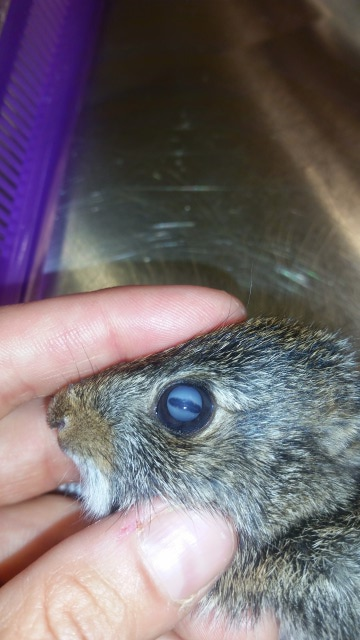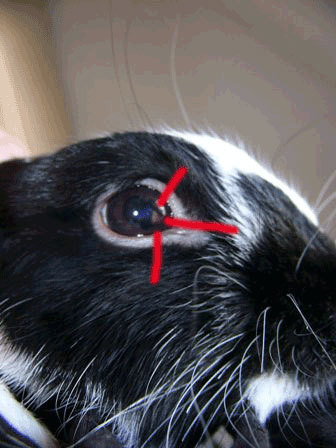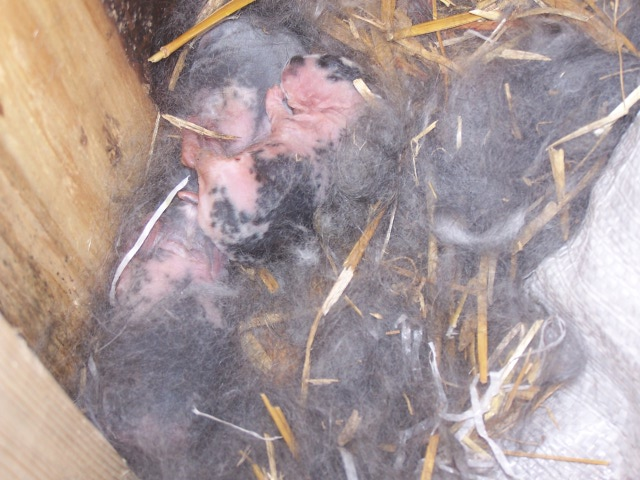QuestionHi,
I have just started raising red satin rabbits. My doe's first litter had a couple torts and the rest are a nice red color, but have dark fringing on the ears. Could I cross a red satin with a white satin to lighten up the coat and then breed those babies back to a red satin. I realize I could get the wrong eye color and toe nail color, but I thought it was worth a shot.
Thanks
AnswerUnfortunately, it is not that simple. White and red are based off completely different genes in rabbits. They do not work with each other like some colours do. A white satin is an albino. The albino gene is very recessive. This means that it is "weaker" than all other genes in its group. A red uses the most dominant (strongest) gene in that same group to attain that full red colour. Now other genes are involved, but for simplicities sake, I will start with going over this one group.
It is called the C group (or more properly, the "C Locus"). This set of genes allows or restricts colour. The C gene is what reds use. This allows full colour to be shown, allowing for the red pigment to show up on the coat. Genes that are lower on the list than the C gene restrict red pigment first, then start to restrict the black/brown pigment as well (as you get further down the list). The albino gene, or the "c gene", is the lowest down the list. It restricts ALL pigment from the skin, fur, eyes, etc. This leaves a totally white rabbit. Any pink that is seen (the eyes, skin, etc.) is caused from the red blood, not from actual pigment.
The problem with albinos is that the "c gene" hides all the other genes on different groups. So it is kind of like a coloured rabbit with a white sheet thrown over it. You do not know what other colour genes are hiding under there. You might have what would be a black if the C group gene was different. Crossing a "black" white to a red would result in copper (probably not the best colour) and black for sure. It could also result in tort and red. It will, in no way, guarantee better colour on the reds. On the same note, you might have a "red" white that just happens to be hiding the right genes for superb red colouring. In this case, it would help the colour, but not because it is white. Instead, it would be helping the colour because it was hiding the right genes.
Really, the only way to be sure of getting better reds is to simply breed to a better red.
If that was a little too technical, the jist of the idea is that breeding red to white can result in all sorts of colours (showable and non-showable) and all shades of those colours (from proper to disqualifiable). The only way a white will produce better red babies with a red is if it just happens to be hiding the genes for good reds. If the white's pedigree is not filled with excellent coloured reds, I would not advise breeding them.

 Eastern Cottontails
Question
ECT eye ECT eye
Hello Dr. Krempel
Eastern Cottontails
Question
ECT eye ECT eye
Hello Dr. Krempel
 Strange spot in eye + pupil is uneven
QuestionStrange pupil + spot
QUESTION: Hello Dan
Strange spot in eye + pupil is uneven
QuestionStrange pupil + spot
QUESTION: Hello Dan
 babies
Question
Picture of there nest
My Holland Lop ju
babies
Question
Picture of there nest
My Holland Lop ju
 Scab-ish growth on my rabbits ear?
Question
Rhino Right outer ear
Hello!
Ill
Scab-ish growth on my rabbits ear?
Question
Rhino Right outer ear
Hello!
Ill
 Is my newly found rabbit a pet or wild rabbit?
Question
Elfie
Hi, Im hoping you can help me figure out
Is my newly found rabbit a pet or wild rabbit?
Question
Elfie
Hi, Im hoping you can help me figure out